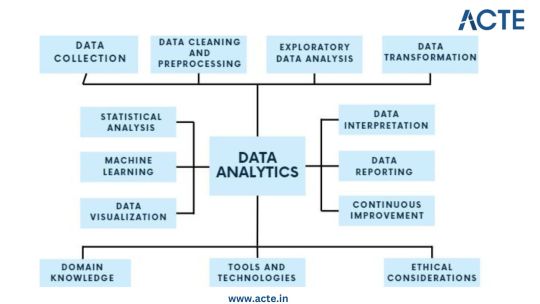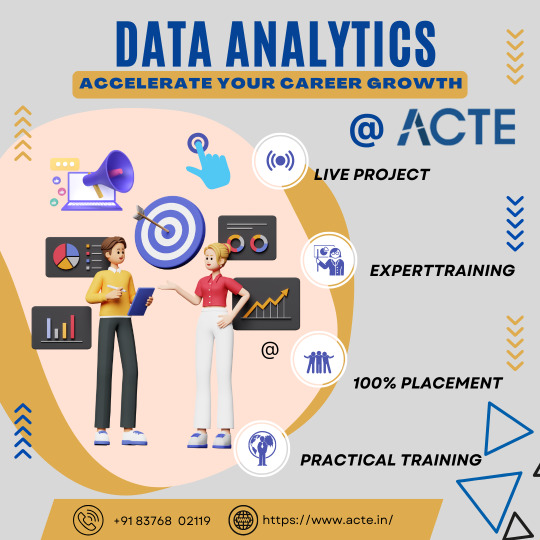#Data Management and Analytics
Explore tagged Tumblr posts
Text
IT Consulting: Navigating technological challenges, optimizing systems, and strategizing for digital transformation in businesses worldwide.
Title: Navigating the Dynamics of IT Consulting: A Comprehensive Guide
In the ever-evolving landscape of technology, businesses are continually challenged to keep pace with the latest trends, innovations, and solutions to maintain their competitive edge. This challenge has propelled the significance of IT consulting firms, which offer expertise, guidance, and support in navigating the complexities of the digital realm. From streamlining operations to implementing cutting-edge solutions, IT consultants play a pivotal role in shaping the technological trajectory of organizations across industries.
Understanding IT Consulting:
IT consulting encompasses a broad spectrum of services aimed at assisting businesses in leveraging technology to achieve their objectives efficiently and effectively. These services encompass various domains, including but not limited to:
1. **Strategic Planning**: IT consultants collaborate with stakeholders to develop comprehensive technology strategies aligned with the organization's goals and objectives.
2. **Infrastructure Assessment and Optimization**: Consultants evaluate existing IT infrastructure, identify areas for improvement, and recommend solutions to optimize performance, scalability, and security.
3. **Digital Transformation**: With the rapid digitization of business processes, consultants help organizations embrace digital transformation initiatives to enhance agility, innovation, and customer experience.
4. **Cybersecurity**: In an era of escalating cyber threats, IT consultants devise robust security frameworks, implement preventive measures, and conduct regular audits to safeguard sensitive data and mitigate risks.
5. **Cloud Computing**: Consultants facilitate the migration to cloud-based platforms, enabling businesses to leverage scalable infrastructure, enhance collaboration, and reduce operational costs.
The Role of IT Consultants:
IT consultants serve as trusted advisors, offering insights, expertise, and guidance to help organizations navigate technological challenges and capitalize on emerging opportunities. Their role encompasses the following key aspects:
1. **Needs Assessment**: Consultants conduct thorough assessments to understand the unique requirements, pain points, and objectives of the client organization.
2. **Solution Design**: Based on the assessment, consultants design customized solutions tailored to address specific business challenges and capitalize on opportunities for growth and innovation.
3. **Implementation and Integration**: Consultants oversee the implementation of technology solutions, ensuring seamless integration with existing systems and processes while minimizing disruptions to operations.
4. **Change Management**: Effective change management is critical to the success of any technology initiative. IT consultants facilitate organizational change by fostering buy-in, providing training, and promoting a culture of innovation and continuous improvement.
5. **Performance Monitoring and Optimization**: Post-implementation, consultants monitor the performance of IT systems, identify bottlenecks, and fine-tune configurations to optimize efficiency, reliability, and scalability.
The Value Proposition of IT Consulting:
The value proposition of IT consulting extends beyond technical expertise and encompasses various benefits for client organizations, including:
1. **Access to Specialized Skills**: IT consultants bring a diverse range of skills, experiences, and perspectives to the table, enabling organizations to tap into specialized expertise that may not be available in-house.
2. **Cost Optimization**: By outsourcing IT services to consultants, organizations can minimize overhead costs associated with hiring, training, and retaining full-time employees, while also gaining access to scalable resources and infrastructure.
3. **Strategic Insights**: Consultants offer strategic insights and industry best practices derived from their experiences working with diverse clients across different sectors, empowering organizations to make informed decisions and stay ahead of the curve.
4. **Risk Mitigation**: In an increasingly complex and dynamic technology landscape, IT consultants help mitigate risks associated with technology adoption, compliance, security breaches, and regulatory changes, thereby safeguarding the reputation and continuity of the business.
5. **Enhanced Agility and Innovation**: By leveraging the expertise of IT consultants, organizations can adapt quickly to changing market conditions, embrace emerging technologies, and foster a culture of innovation that drives sustainable growth and competitive advantage.
Challenges and Considerations:
While IT consulting offers numerous benefits, it also presents certain challenges and considerations that organizations must address:
1. **Alignment with Business Objectives**: It is essential to ensure that IT initiatives align closely with the broader strategic objectives of the organization to maximize the return on investment and drive tangible business outcomes.
2. **Vendor Selection**: Choosing the right IT consulting firm is critical to the success of technology initiatives. Organizations should conduct thorough due diligence, evaluate credentials, and seek recommendations to identify consultants with the requisite expertise, track record, and cultural fit.
3. **Communication and Collaboration**: Effective communication and collaboration between internal stakeholders and external consultants are essential for project success. Clear expectations, roles, and responsibilities should be established upfront to mitigate misunderstandings and ensure alignment throughout the engagement.
4. **Change Management**: Resistance to change is a common challenge in technology implementations. Organizations must proactively address cultural barriers, provide adequate training and support, and foster open dialogue to promote acceptance and adoption of new technologies and processes.
5. **Continuous Evaluation and Improvement**: Technology landscapes evolve rapidly, necessitating ongoing evaluation and optimization of IT strategies and solutions. Organizations should cultivate a culture of continuous improvement, embrace feedback, and adapt proactively to emerging trends and challenges.
Conclusion:
In an era defined by digital disruption and technological innovation, the role of IT consulting has never been more critical. By leveraging the expertise, insights, and guidance of IT consultants, organizations can navigate the complexities of the digital landscape, capitalize on emerging opportunities, and drive sustainable growth and competitive advantage. However, success in IT consulting hinges not only on technical proficiency but also on effective collaboration, strategic alignment, and a relentless commitment to innovation and excellence. As businesses continue to embrace digital transformation as a strategic imperative, the partnership between organizations and IT consultants will remain instrumental in shaping the future of technology and driving meaningful change across industries.

#Strategic Planning#Technology Assessments#System Integration#Software Development#Network Security#Cloud Computing#Data Management and Analytics#IT Infrastructure Management#Training and Support#Regulatory Compliance
0 notes
Text
New Business Marketing Tips And Tricks for Success
Starting a new business can be an exciting endeavor, but it also comes with its fair share of challenges, especially in the competitive landscape of today's market. Effective marketing is crucial for the success of any new venture. Here are four essential marketing tips and tricks to help your new business thrive.
Define Your Target Audience: Before diving into marketing efforts, it's essential to identify and understand your target audience. Define your ideal customer persona by considering demographics, interests, pain points, and buying behaviors. Conduct market research to gather valuable insights that will guide your marketing strategies. Tailoring your messages and campaigns to resonate with your target audience will significantly increase your chances of success.
Once you have a clear picture of your audience, choose the most suitable marketing channels to reach them effectively. Social media, email marketing, content marketing, and pay-per-click advertising are just a few options to consider. Your choice of channels should align with where your audience spends their time online.

Create Compelling Content: Content marketing is a powerful tool for new businesses to establish their brand and build credibility. Develop high-quality, informative, and engaging content that addresses the needs and interests of your target audience. This content can take various forms, including blog posts, videos, infographics, and podcasts.
Consistency is key when it comes to content creation. Develop a content calendar to plan and schedule regular updates. Providing valuable content not only helps you connect with your audience but also boosts your search engine rankings, making it easier for potential customers to find you.

Leverage Social Media: Social media platforms have become indispensable for marketing in today's digital age. Create profiles on relevant social media platforms and engage with your audience regularly. Share your content, interact with followers, and participate in industry-related discussions.
Paid advertising on social media can also be a cost-effective way to reach a broader audience. Platforms like Facebook, Instagram, and LinkedIn offer targeting options that allow you to reach users who match your ideal customer profile.

Monitor and Adapt: Marketing is an ever-evolving field, and what works today may not work tomorrow. To stay ahead of the curve, regularly monitor the performance of your marketing efforts. Analyze key metrics such as website traffic, conversion rates, and return on investment (ROI). Use tools like Google Analytics and social media insights to gather data and insights.
Based on your findings, be prepared to adapt your strategies and tactics. If a particular marketing channel isn't delivering the expected results, reallocate your resources to more promising avenues. Stay up-to-date with industry trends and keep an eye on your competitors to ensure your marketing efforts remain relevant and competitive.
In conclusion, effective marketing is essential for the success of any new business. By defining your target audience, creating compelling content, leveraging social media, and continuously monitoring and adapting your strategies, you can position your new business for growth and long-term success in a competitive market. Remember that success may not come overnight, but with persistence and the right marketing approach, your new business can thrive.

#business#digitalbusiness#digitalmarketing#seo#market analysis#data analytics#marketing#management#sales#learn digital marketing#Digital marketing course#seo expert#business success#businessgrowth
88 notes
·
View notes
Text
Abathur

At Abathur, we believe technology should empower, not complicate.
Our mission is to provide seamless, scalable, and secure solutions for businesses of all sizes. With a team of experts specializing in various tech domains, we ensure our clients stay ahead in an ever-evolving digital landscape.
Why Choose Us? Expert-Led Innovation – Our team is built on experience and expertise. Security First Approach – Cybersecurity is embedded in all our solutions. Scalable & Future-Proof – We design solutions that grow with you. Client-Centric Focus – Your success is our priority.
#Software Development#Web Development#Mobile App Development#API Integration#Artificial Intelligence#Machine Learning#Predictive Analytics#AI Automation#NLP#Data Analytics#Business Intelligence#Big Data#Cybersecurity#Risk Management#Penetration Testing#Cloud Security#Network Security#Compliance#Networking#IT Support#Cloud Management#AWS#Azure#DevOps#Server Management#Digital Marketing#SEO#Social Media Marketing#Paid Ads#Content Marketing
2 notes
·
View notes
Text
instagram
Hey there! 🚀 Becoming a data analyst is an awesome journey! Here’s a roadmap for you:
1. Start with the Basics 📚:
- Dive into the basics of data analysis and statistics. 📊
- Platforms like Learnbay (Data Analytics Certification Program For Non-Tech Professionals), Edx, and Intellipaat offer fantastic courses. Check them out! 🎓
2. Master Excel 📈:
- Excel is your best friend! Learn to crunch numbers and create killer spreadsheets. 📊🔢
3. Get Hands-on with Tools 🛠️:
- Familiarize yourself with data analysis tools like SQL, Python, and R. Pluralsight has some great courses to level up your skills! 🐍📊
4. Data Visualization 📊:
- Learn to tell a story with your data. Tools like Tableau and Power BI can be game-changers! 📈📉
5. Build a Solid Foundation 🏗️:
- Understand databases, data cleaning, and data wrangling. It’s the backbone of effective analysis! 💪🔍
6. Machine Learning Basics 🤖:
- Get a taste of machine learning concepts. It’s not mandatory but can be a huge plus! 🤓🤖
7. Projects, Projects, Projects! 🚀:
- Apply your skills to real-world projects. It’s the best way to learn and showcase your abilities! 🌐💻
8. Networking is Key 👥:
- Connect with fellow data enthusiasts on LinkedIn, attend meetups, and join relevant communities. Networking opens doors! 🌐👋
9. Certifications 📜:
- Consider getting certified. It adds credibility to your profile. 🎓💼
10. Stay Updated 🔄:
- The data world evolves fast. Keep learning and stay up-to-date with the latest trends and technologies. 📆🚀
. . .
#programming#programmers#developers#mobiledeveloper#softwaredeveloper#devlife#coding.#setup#icelatte#iceamericano#data analyst road map#data scientist#data#big data#data engineer#data management#machinelearning#technology#data analytics#Instagram
8 notes
·
View notes
Text

Transform your business with Magtec ERP! 🌐✨ Discover endless possibilities on a single platform. Book a demo today and see how we can elevate your operations to the next level! 🚀📈
#magtec#magtecerp#magtecsolutions#erp#businesssolutions#digitaltransformation#innovation#technology#growth#efficiency#productivity#cloud#automation#management#software#enterprise#success#analytics#customization#scalability#integration#teamwork#collaboration#strategy#data#support#consulting#businessdevelopment#transformation#leadership
4 notes
·
View notes
Text
i get to work with time series data at work & im excited about it
#one step closer to becoming hermann gottlieb lmao#it's also interesting because it's like. the first job ive had where they just expect me to figure stuff out??#sort of anyway#like i have been given a thing to manage#they taught me how to do parts of that but basically im in charge of analysis#and like. figuring out WHAT needs doing#which means i get to watch stats videos at work 💕#my plan for the next week or so is like. every morning check how the thing is doing & make changes as needed#and then if i have extra time use that to refine my analytics approaches#which for now means setting up R so i can get the data in there lmao#we have a dashboard but the dashboard is best for eyeballin it#personal
3 notes
·
View notes
Text
Top 5 DeepSeek AI Features Powering Industry Innovation
Table of Contents1. The Problem: Why Legacy Tools Can’t Keep Up2. What Makes DeepSeek AI Unique?3. 5 Game-Changing DeepSeek AI Features (with Real Stories)3.1 Adaptive Learning Engine3.2 Real-Time Anomaly Detection3.3 Natural Language Reports3.4 Multi-Cloud Sync3.5 Ethical AI Auditor4. How These Features Solve Everyday Challenges5. Step-by-Step: Getting Started with DeepSeek AI6. FAQs: Your…
#affordable AI solutions#AI automation#AI for educators#AI for entrepreneurs#AI for non-techies#AI for small business#AI in manufacturing#AI innovation 2024#AI time management#business growth tools#data-driven decisions#DeepSeek AI Features#ethical AI solutions#healthcare AI tools#no-code AI tools#Predictive Analytics#real-time analytics#remote work AI#retail AI features#startup AI tech
2 notes
·
View notes
Text
In the subject of data analytics, this is the most important concept that everyone needs to understand. The capacity to draw insightful conclusions from data is a highly sought-after talent in today's data-driven environment. In this process, data analytics is essential because it gives businesses the competitive edge by enabling them to find hidden patterns, make informed decisions, and acquire insight. This thorough guide will take you step-by-step through the fundamentals of data analytics, whether you're a business professional trying to improve your decision-making or a data enthusiast eager to explore the world of analytics.

Step 1: Data Collection - Building the Foundation
Identify Data Sources: Begin by pinpointing the relevant sources of data, which could include databases, surveys, web scraping, or IoT devices, aligning them with your analysis objectives. Define Clear Objectives: Clearly articulate the goals and objectives of your analysis to ensure that the collected data serves a specific purpose. Include Structured and Unstructured Data: Collect both structured data, such as databases and spreadsheets, and unstructured data like text documents or images to gain a comprehensive view. Establish Data Collection Protocols: Develop protocols and procedures for data collection to maintain consistency and reliability. Ensure Data Quality and Integrity: Implement measures to ensure the quality and integrity of your data throughout the collection process.
Step 2: Data Cleaning and Preprocessing - Purifying the Raw Material
Handle Missing Values: Address missing data through techniques like imputation to ensure your dataset is complete. Remove Duplicates: Identify and eliminate duplicate entries to maintain data accuracy. Address Outliers: Detect and manage outliers using statistical methods to prevent them from skewing your analysis. Standardize and Normalize Data: Bring data to a common scale, making it easier to compare and analyze. Ensure Data Integrity: Ensure that data remains accurate and consistent during the cleaning and preprocessing phase.
Step 3: Exploratory Data Analysis (EDA) - Understanding the Data
Visualize Data with Histograms, Scatter Plots, etc.: Use visualization tools like histograms, scatter plots, and box plots to gain insights into data distributions and patterns. Calculate Summary Statistics: Compute summary statistics such as means, medians, and standard deviations to understand central tendencies. Identify Patterns and Trends: Uncover underlying patterns, trends, or anomalies that can inform subsequent analysis. Explore Relationships Between Variables: Investigate correlations and dependencies between variables to inform hypothesis testing. Guide Subsequent Analysis Steps: The insights gained from EDA serve as a foundation for guiding the remainder of your analytical journey.
Step 4: Data Transformation - Shaping the Data for Analysis
Aggregate Data (e.g., Averages, Sums): Aggregate data points to create higher-level summaries, such as calculating averages or sums. Create New Features: Generate new features or variables that provide additional context or insights. Encode Categorical Variables: Convert categorical variables into numerical representations to make them compatible with analytical techniques. Maintain Data Relevance: Ensure that data transformations align with your analysis objectives and domain knowledge.
Step 5: Statistical Analysis - Quantifying Relationships
Hypothesis Testing: Conduct hypothesis tests to determine the significance of relationships or differences within the data. Correlation Analysis: Measure correlations between variables to identify how they are related. Regression Analysis: Apply regression techniques to model and predict relationships between variables. Descriptive Statistics: Employ descriptive statistics to summarize data and provide context for your analysis. Inferential Statistics: Make inferences about populations based on sample data to draw meaningful conclusions.
Step 6: Machine Learning - Predictive Analytics
Algorithm Selection: Choose suitable machine learning algorithms based on your analysis goals and data characteristics. Model Training: Train machine learning models using historical data to learn patterns. Validation and Testing: Evaluate model performance using validation and testing datasets to ensure reliability. Prediction and Classification: Apply trained models to make predictions or classify new data. Model Interpretation: Understand and interpret machine learning model outputs to extract insights.
Step 7: Data Visualization - Communicating Insights
Chart and Graph Creation: Create various types of charts, graphs, and visualizations to represent data effectively. Dashboard Development: Build interactive dashboards to provide stakeholders with dynamic views of insights. Visual Storytelling: Use data visualization to tell a compelling and coherent story that communicates findings clearly. Audience Consideration: Tailor visualizations to suit the needs of both technical and non-technical stakeholders. Enhance Decision-Making: Visualization aids decision-makers in understanding complex data and making informed choices.
Step 8: Data Interpretation - Drawing Conclusions and Recommendations
Recommendations: Provide actionable recommendations based on your conclusions and their implications. Stakeholder Communication: Communicate analysis results effectively to decision-makers and stakeholders. Domain Expertise: Apply domain knowledge to ensure that conclusions align with the context of the problem.
Step 9: Continuous Improvement - The Iterative Process
Monitoring Outcomes: Continuously monitor the real-world outcomes of your decisions and predictions. Model Refinement: Adapt and refine models based on new data and changing circumstances. Iterative Analysis: Embrace an iterative approach to data analysis to maintain relevance and effectiveness. Feedback Loop: Incorporate feedback from stakeholders and users to improve analytical processes and models.
Step 10: Ethical Considerations - Data Integrity and Responsibility
Data Privacy: Ensure that data handling respects individuals' privacy rights and complies with data protection regulations. Bias Detection and Mitigation: Identify and mitigate bias in data and algorithms to ensure fairness. Fairness: Strive for fairness and equitable outcomes in decision-making processes influenced by data. Ethical Guidelines: Adhere to ethical and legal guidelines in all aspects of data analytics to maintain trust and credibility.

Data analytics is an exciting and profitable field that enables people and companies to use data to make wise decisions. You'll be prepared to start your data analytics journey by understanding the fundamentals described in this guide. To become a skilled data analyst, keep in mind that practice and ongoing learning are essential. If you need help implementing data analytics in your organization or if you want to learn more, you should consult professionals or sign up for specialized courses. The ACTE Institute offers comprehensive data analytics training courses that can provide you the knowledge and skills necessary to excel in this field, along with job placement and certification. So put on your work boots, investigate the resources, and begin transforming.
24 notes
·
View notes
Text
so, i am trying to get into finance and data analytics, and i am starting to realize it is a very misogynistic field. shit is getting real. wow
8 notes
·
View notes
Text
From Chaos to Clarity: The Importance of Streamlining Your Data Management Strategy
In the blog post "Streamlining Data Management Strategy," SG Analytics emphasizes the importance of a robust data management strategy in today's digital landscape. The article discusses the challenges posed by the explosion of data, such as data silos, security risks, and quality issues. The post provides a step-by-step guide to assess the current data landscape and implement a streamlined data management approach to harness the full potential of data assets. Read more : https://www.sganalytics.com/blog/streamlining-data-management-strategy/

3 notes
·
View notes
Text

#Business Analytics#Colleges in India#Data Analytics#Top Colleges in India#Business Analytics Courses#Management#Colleges for Business Analytics#Big Data Analytics#Management Programs in India#Data Visualization
2 notes
·
View notes
Text
SPARK TECHNOLOGIES
We deliver value by identifying opportunities that align with business objectives and adopting an agile approach to implement them.
#Web developement#Software testing#Devops & Engineering#Salesforce#Mobile Application Developmen#Data Analytics#IT Consulting#IT Outsourcing#Web Design#Content Management System#Digital Marketing
2 notes
·
View notes
Text
SPARK TECHNOLOGIES
We will strive to surpass our clients’ expectations by providing innovative solutions that are grounded in science and experience, developed by recognized experts, and delivered in a trusted manner above reproach. We will remain steadfastly focused on our clients’ goals and work every day to ensure that the issues of current importance, which they are charged with solving, are moved closer to a proven and cost-effective resolution.
#web developement#software testing#devas & Engineering#salesforce#mobile app development#data analytics#it consulting#it outsourcing#web design#content management system#digital marketing
2 notes
·
View notes
Text
SPARK TECHNOLOGIES

We deliver value by identifying opportunities that align with business objectives and adopting an agile approach to implement them. We take full accountability for the IT and operation initiatives we propose and help you accomplish business goals faster. click here for more
#webdevelopement#softwaretesting#devops & engineering#salesforce#mobile application development#data analytics#it consulting#it outsourcing#web design#content management system#digital marketing
2 notes
·
View notes
Text
Strategic Foundations of Business Analytics Management: Key Learnings for PGDM Specialization

#PGDM#PGDM in Business Analytics#PGDM Colleges in Bangalore#Data Analytics#Top Colleges in Bangalore#Business Analytics Courses#Management#Colleges for Business Analytics#PGDM Courses
1 note
·
View note
Text
Data Modelling Master Class-Series | Introduction -Topic 1
https://youtu.be/L1x_BM9wWdQ
#theDataChannel @thedatachannel @datamodelling
#data modeling#data#data architecture#data analytics#data quality#enterprise data management#enterprise data warehouse#the Data Channel#data design#data architect#entity relationship#ERDs#physical data model#logical data model#data governance
2 notes
·
View notes